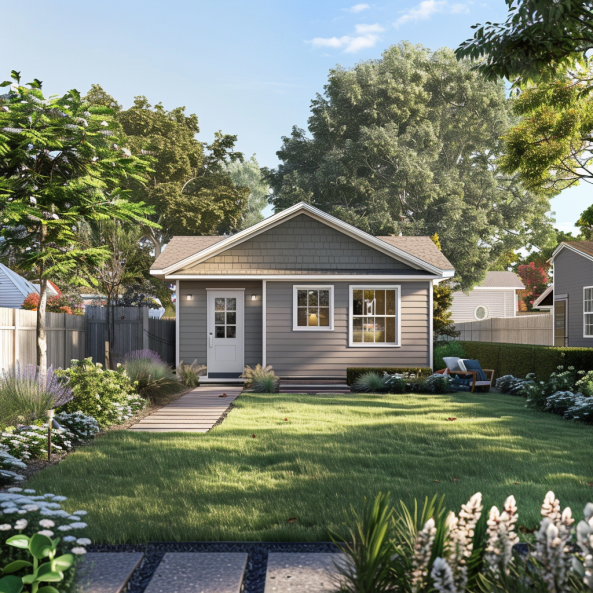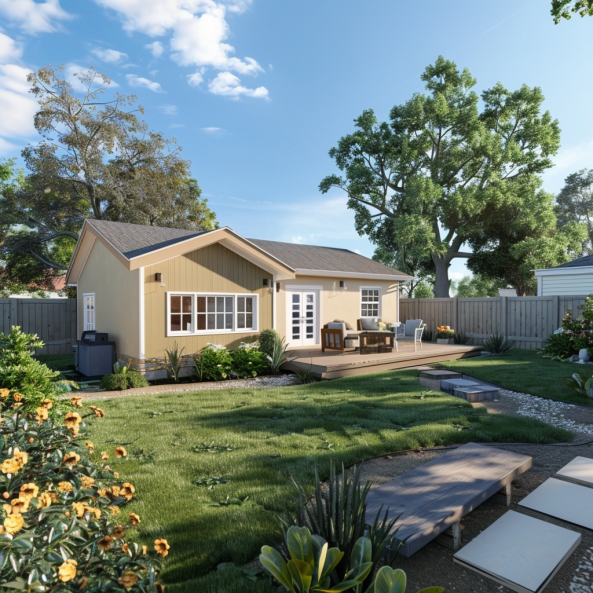Have you ever considered turning your single-family home into a multi-unit property? Building an Accessory Dwelling Unit (ADU) in your backyard or converting your garage might just be the most efficient and cost-effective way to make that leap. In today’s blog, we delve into the entire process of creating your first ADU – from the initial planning stages to the final build, and even the potential costs involved.
Understanding ADUs
An ADU, or Accessory Dwelling Unit, is a secondary housing unit on a single-family residential lot. Initially designed as an extension to the main property, ADUs have evolved and can now be found on commercial units and multi-family properties. Despite their varied locations, ADUs maintain their status as secondary units, offering a versatile solution to the growing need for housing.
The surge in ADU construction, especially in regions like California, is partly due to state-level pressures on cities to increase housing availability. This initiative is not only providing more housing options but also allowing homeowners to generate rental income, thereby contributing significantly to the private housing sector.
The ADU Process: Steps and Financing
Embarking on the ADU journey involves several key steps. Initially, you’ll need to assess what’s feasible for your property. This might involve consulting with an architect or contractor experienced in ADU projects. Once you have a clear plan, the next steps typically include drafting architectural plans, securing financing, and obtaining the necessary permits.
Financing your ADU can be achieved through various means. Many homeowners opt for cash payments, while others may prefer utilizing home equity through a HELOC (Home Equity Line of Credit). It’s crucial to choose a financing route that aligns with your financial situation and goals.
The Timeline: From Planning to Completion
The duration of an ADU project can vary significantly based on factors like the nature of the project and city-specific regulations. A standard garage conversion into an ADU, for instance, might take approximately six months, split between planning/permitting and actual construction.
It’s essential to recognize that each property is unique. Setbacks like proximity to schools or utility infrastructure can extend the timeline, emphasizing the importance of a thorough initial assessment and realistic timeline expectations.
Navigating City Regulations and Fees
Navigating the complexities of city regulations and fees is a critical aspect of the ADU process. From planning approvals to utility clearances, understanding and complying with these requirements is paramount. Fees can also vary widely, so it’s advisable to consult with professionals who are well-versed in local regulations.
The Value of ADUs
ADUs are more than just construction projects; they are strategic investments that can significantly enhance property value. Whether it’s creating a rental income source, accommodating family members, or adding functional space like a home office, the versatility of ADUs makes them a valuable addition to any property.
Conclusion
Building an ADU is a journey that requires careful planning, a clear understanding of regulations, and a commitment to navigating the construction process. However, the potential benefits – from added property value to income generation – make it a worthy consideration for homeowners looking to maximize their property’s potential.
Are you ready to explore the possibilities of an ADU on your property? The journey to transforming your home into a multi-unit property is just a consultation away. Contact GoldenADU today to begin your journey towards a more versatile and valuable home.





